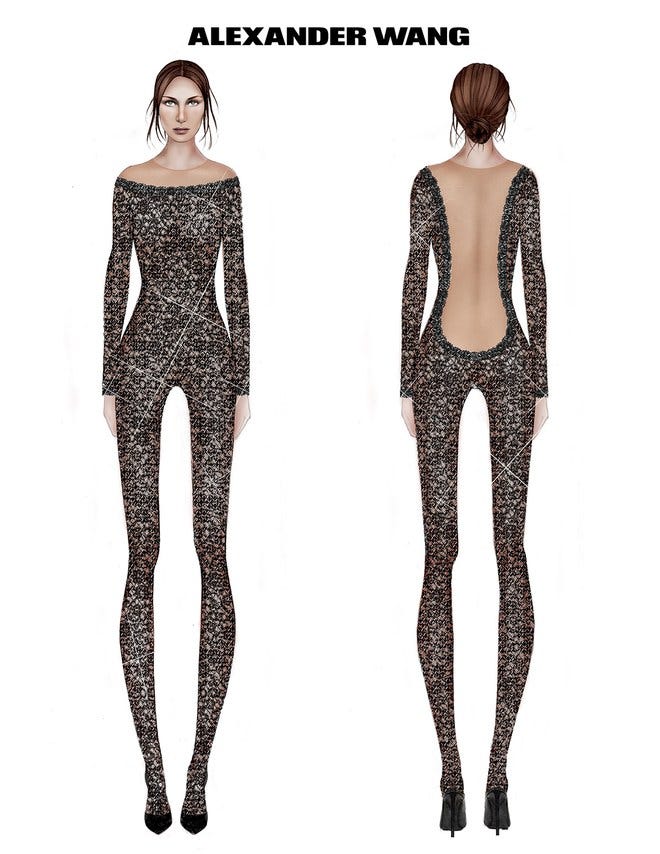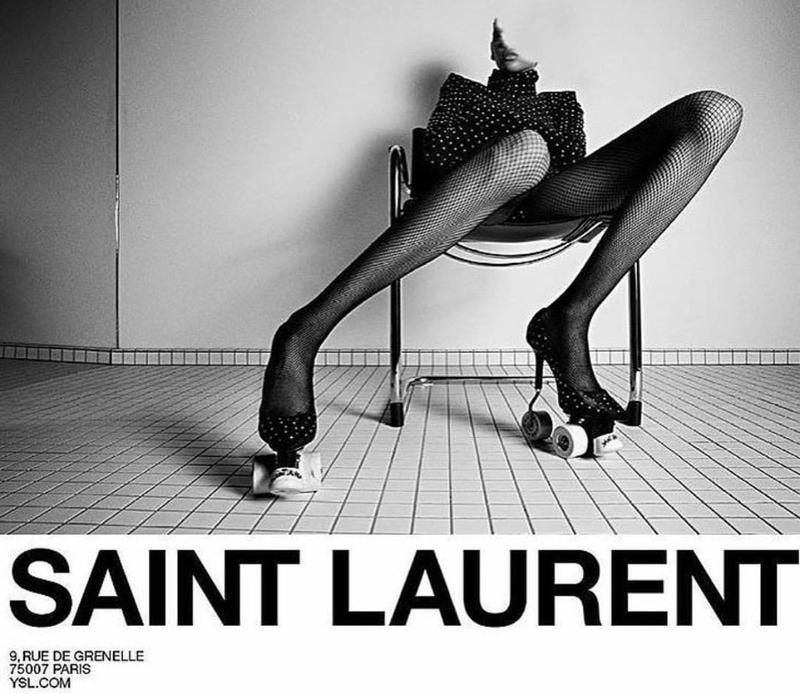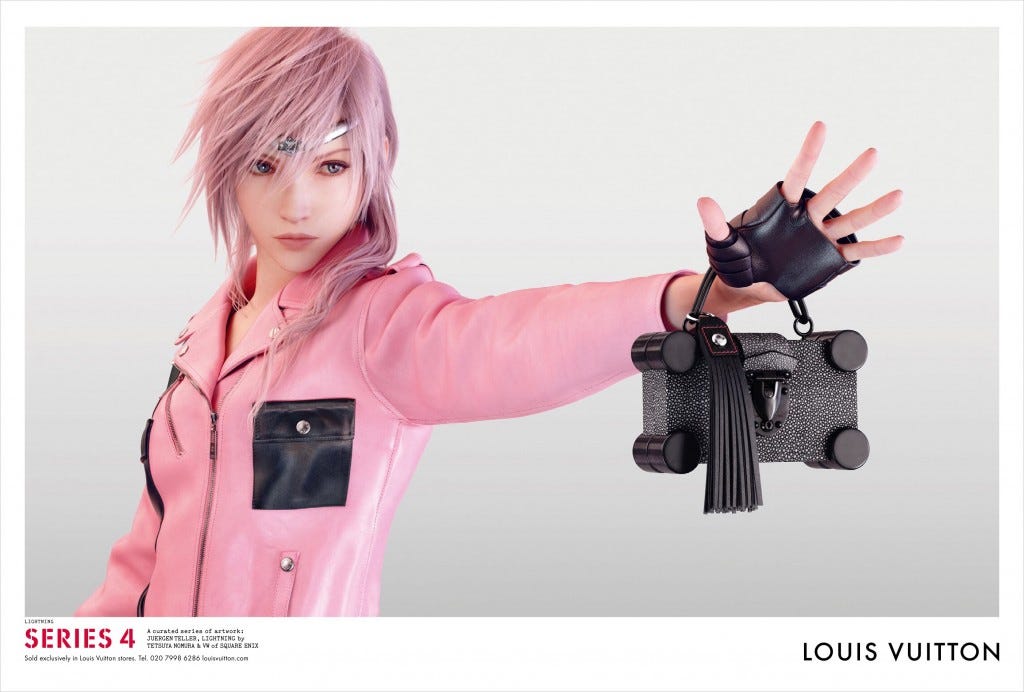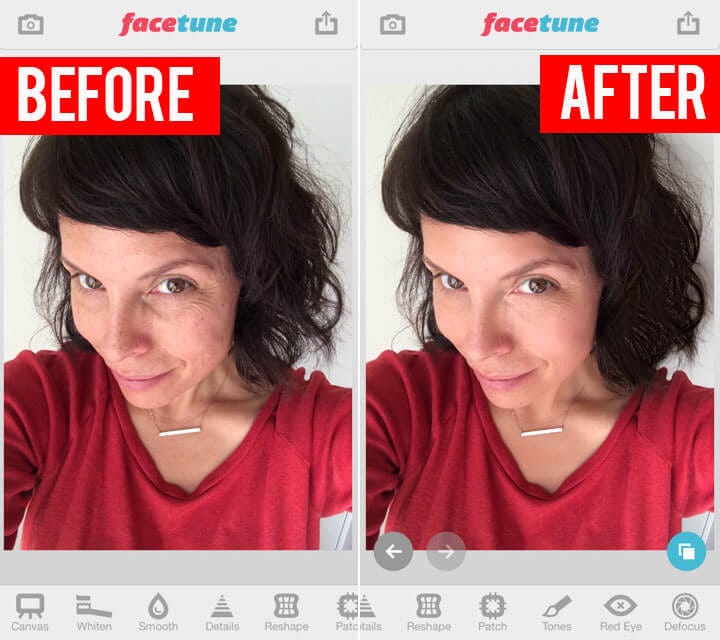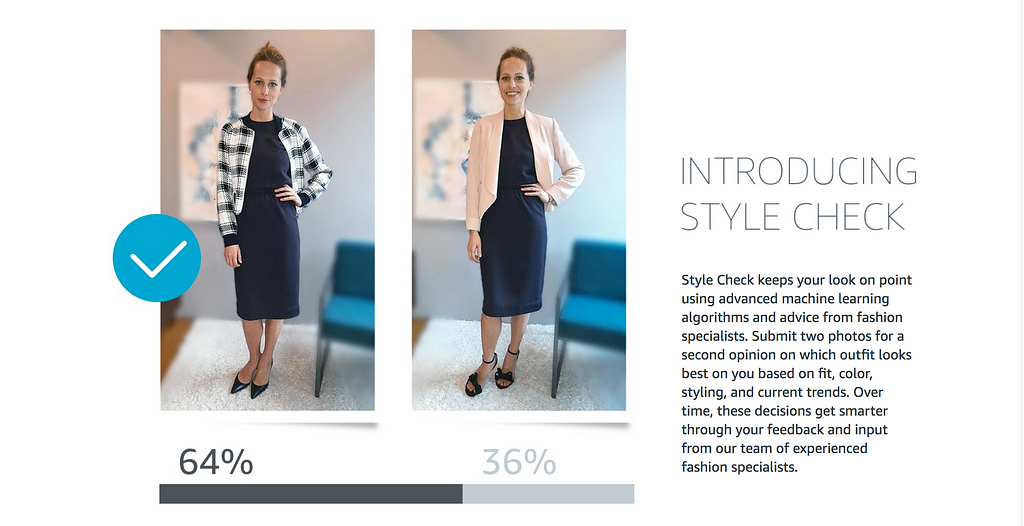Latest news about Bitcoin and all cryptocurrencies. Your daily crypto news habit.
This is (almost) the text of a talk I gave as part of the Museum of London’s Futureshocks season, on humans in the city. It’s about how technology has allowed both the Woman’s and the Robot’s Gaze to emerge as cultural forces.
I’m going to talk about clothes and body image and identity, and the way that Instagram and other kinds of new technology are changing and challenging how women are seen, and how we see ourselves. And about the importance of whose gaze we’re looking through: men’s, women’s, or robots.
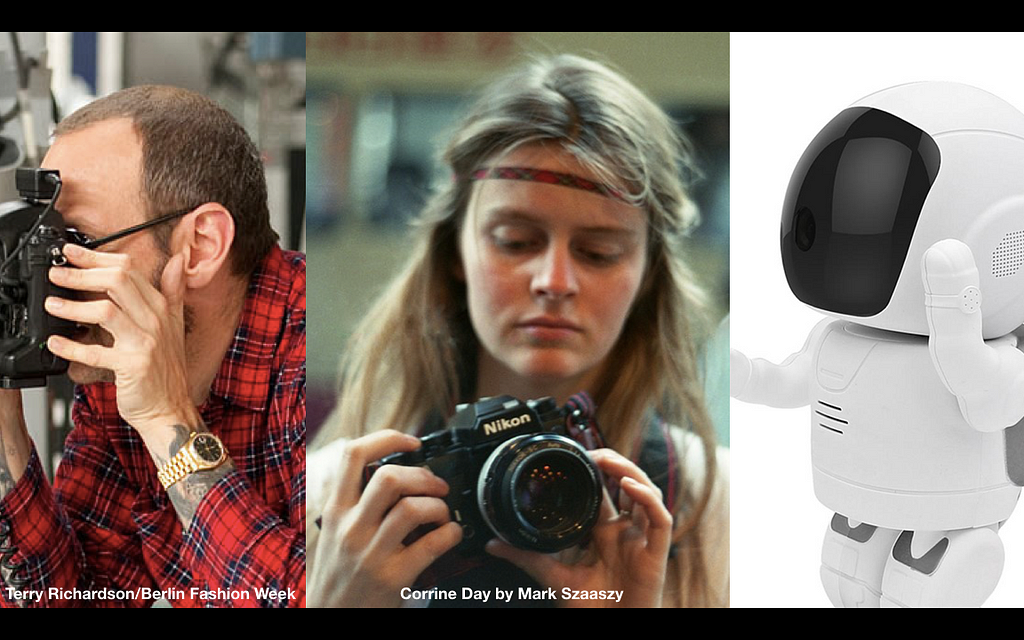 Who do women want to be seen by? Men, women, or robots?
Who do women want to be seen by? Men, women, or robots?
What I’m going to call “the fashion internet” is interesting to me because it’s mostly out of sight of mainstream technology commentary.
From a technical perspective it’s understood that there is, at the moment, a single Internet — an open network of networks in which everything is connected. But not everyone has the same experience of those networks — there is not a single experience that defines the digital world.
It’s fashionable to call this a filter bubble, but it’s no more or less a bubble than the rest of our lives: the networks we inhabit are constructed by our interests, our backgrounds, the people we know. This isn’t simply a consequence of algorithms or personalisation, it’s also because no one can see everything — there’s no digital omniscience.
This lack of a shared view means that predictions for our near future tend to represent a few of us, at best. They are filled with drones and self-driving cars and cold beers that are on the table when you get home. These futures belong to a small — often male and affluent — slither of society. Other futures are of course possible, but they’re not always seen, or allowed to emerge.
In reality, every city, every street, holds many contradictory futures at once — what is true for one of us won’t be true for everyone — yet in spite of that, certain people’s futures become the dominant narratives, while others’ are trivialised.
How women’s fashionable lives have been changed by technology is playing out in plain sight, but it’s also hidden from view — taking place in the alternate reality of our Instagram timelines, rather than on the city streets around us.
The most visible membrane of this is our traditional perception of women and power. At first glance, women appear vulnerable, partly clothed and available to the camera. But it’s an easy misconception to think this is the whole story.
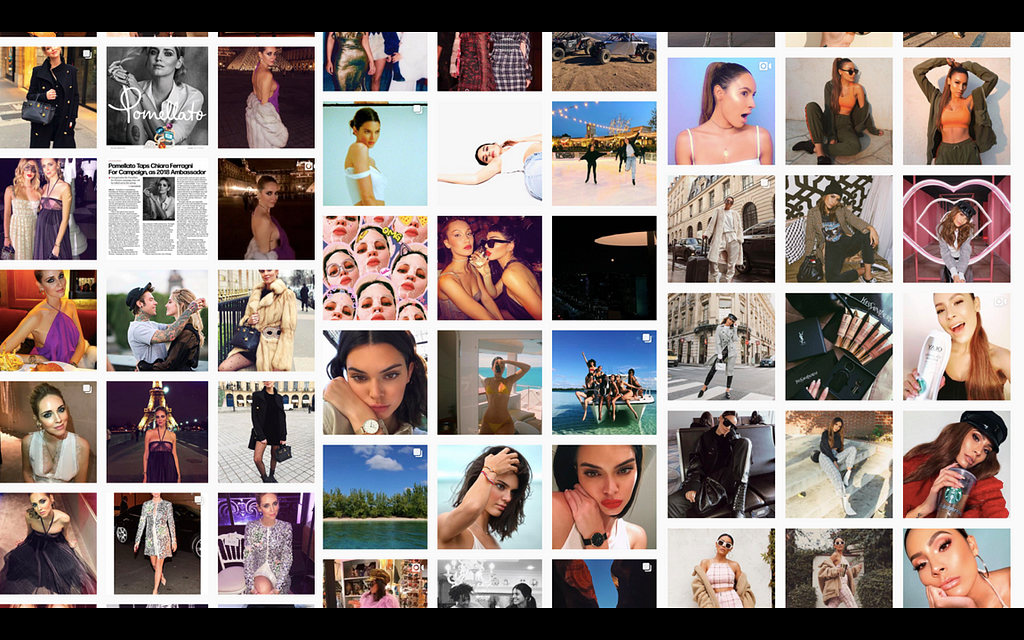 A snapshot of Kendall Jenner and Desi Perkin’s Instagram feeds
A snapshot of Kendall Jenner and Desi Perkin’s Instagram feeds
Technology has changed the power dynamics of how women look, how they appear, and made the Woman’s Gaze into a culturally significant force.
The fact that women can now own and manipulate their appearance might, in time, provide a protection from the harassment and the day-to-day harms of our physical lives.
I’m going to explore this in three ways by talking about women wearing clothes, women wearing make-up, and women taking pictures.
And I’ll start with women wearing clothes.
So — going back to an evening last May. It was kind of late and I was getting ready for bed, and I saw this picture from the Met Gala ball pop up on Twitter.
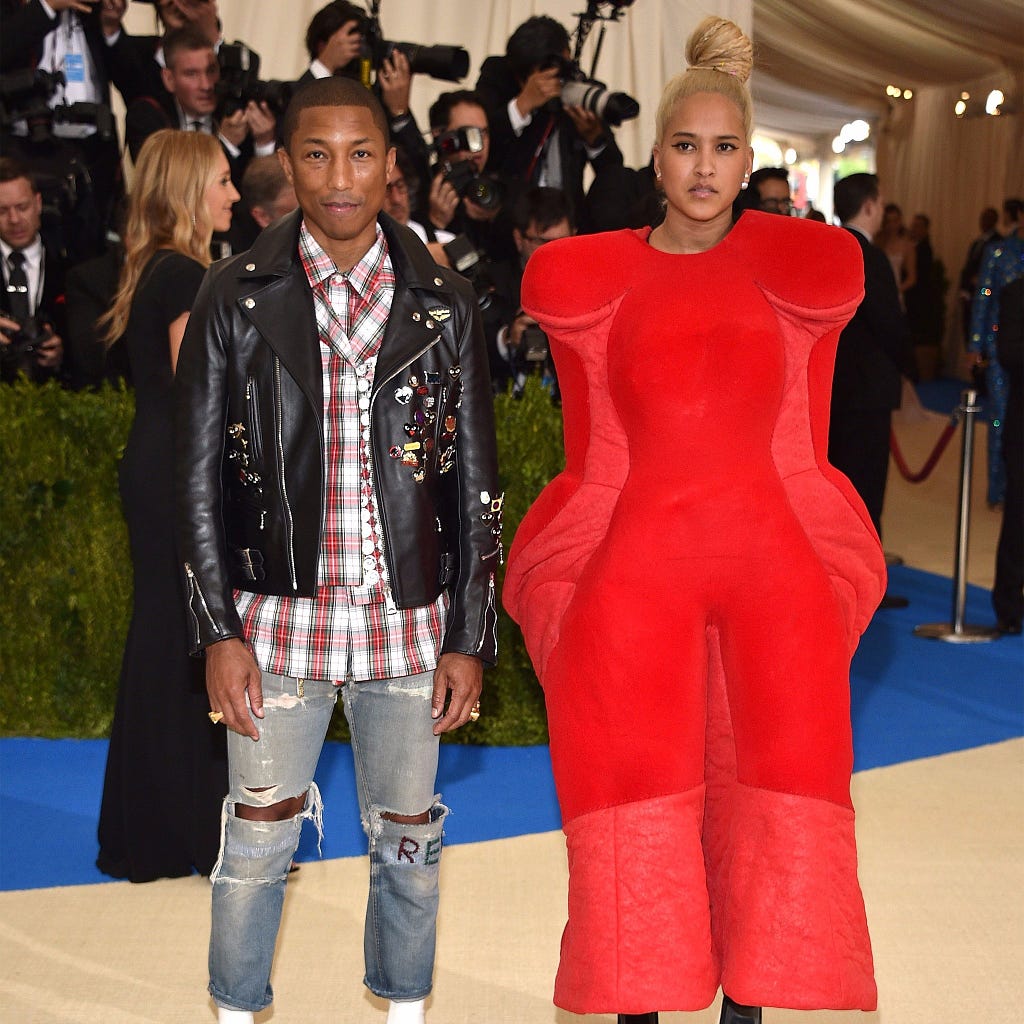 Helen Lasichanh and Pharrell Williams at the 2017 Met Gala Ball, picture from Vogue.com
Helen Lasichanh and Pharrell Williams at the 2017 Met Gala Ball, picture from Vogue.com
This is Pharrell Williams, looking kind of so so, and his wife Helen Lasichanh, looking extraordinary and unlike any normal idea of how women appear in the world or on the red carpet. So I stopped what I was doing — which was probably getting ready to go to sleep — and watched some of the live stream of the other women turning up on the red carpet.
The gala was in honour of Rei Kawakubo from Commes des Garçons. The clothes she makes for women look like this:
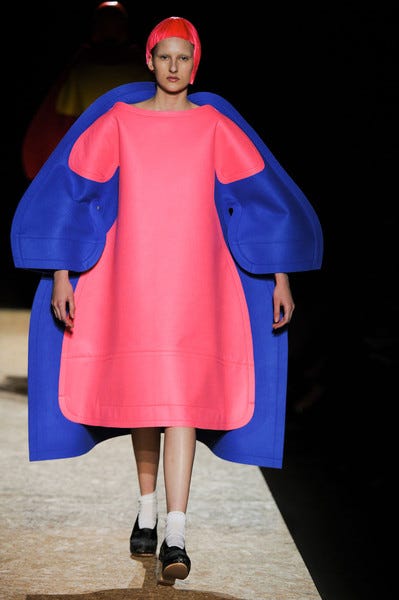 A dress from the Commes des Garçons Fall 2012 Ready-to-Wear Collection (Vogue)
A dress from the Commes des Garçons Fall 2012 Ready-to-Wear Collection (Vogue)
So I was expecting to see more women wearing challenging and extraordinary outfits.
But I was fairly quickly disappointed.
I realise I’d not actually ever seen, or thought about, what makes those big red carpet moments happen. And sure, while Helen Lasichanh might not be wearing the most practical outfit in the world, she looks both powerful and, quite literally, protected. Insulated from the outside world, while sending a message of utter confidence. Not only is she taking up space, but she looks like she couldn’t care less. But she was one of the few guests who met the dress code head on.
Instead, there were lots of very slender women, wearing shoes that were too high to walk in and dresses that needed three people to organise, standing around looking shell-shocked at the shouting photographers and the lights, waiting for their stylist to tell them where to stand. They were making princessy, high-status pictures, where the train of the dress fell in a perfect puddle and the light bounced from their borrowed diamonds to illuminate their faces. They weren’t there to have fun; they were there to create highly syndicatable and profitable moments in time.
Inevitably, the standout image from the evening had nothing to do with Kawakubo at all.
It was this picture of the model and Instagram sensation Bella Hadid, showing off her “revenge body” after a break-up.
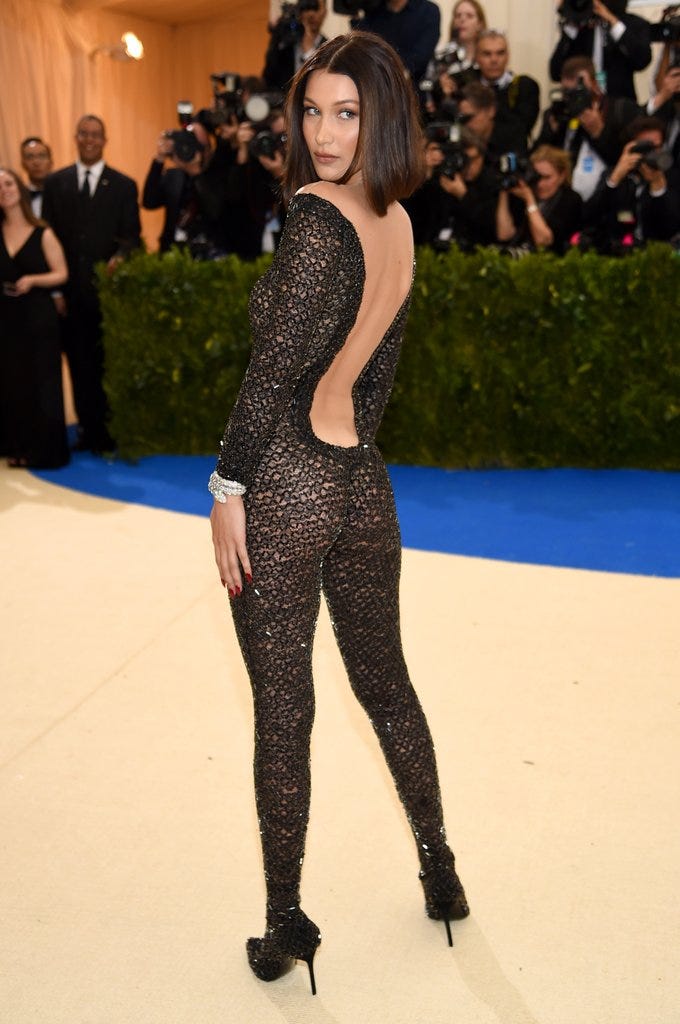 Image: Bella Hadid in Alexander Wang (Vogue)
Image: Bella Hadid in Alexander Wang (Vogue)
Hadid is a millionaire, and incredibly influential in the fashion world. She has 17m followers on Instagram and her picture fills billboards and magazines. But to look at this picture, you would never know that: she is vulnerable, passive — barely dressed, coquettish, wearing a body suit that the designer Alexander Wang “stitched her into”, like a chastity belt.
And it’s worth just quickly taking a quick look at Wang’s sketch for the outfit.
The body here is so anatomically unlikely it may as well be some kind of curvy, upside down giraffe: the impossibility of walking or sitting down with that of degree of thigh gap, of holding up that curvy bottom on those spindly legs, makes it seem fantastical that this could be a sketch of how clothes relate to a human body. Yet this is how powerful, influential young women are depicted. No leg can be long or slender enough to do justice to the design.
So, I stopped watching the live stream and went to sleep, but a few weeks later I was in New York and went along to the exhibition. And afterwards, while I was wondering around downstairs in the Met, I was really struck when I walked into one of the armoury rooms by how much this suit of armour reminded me of Lasichanh’s outfit. The padding, the top knot, the stance, they’re all kind of the same, and so different to the vulnerability of Hadid’s outfit.
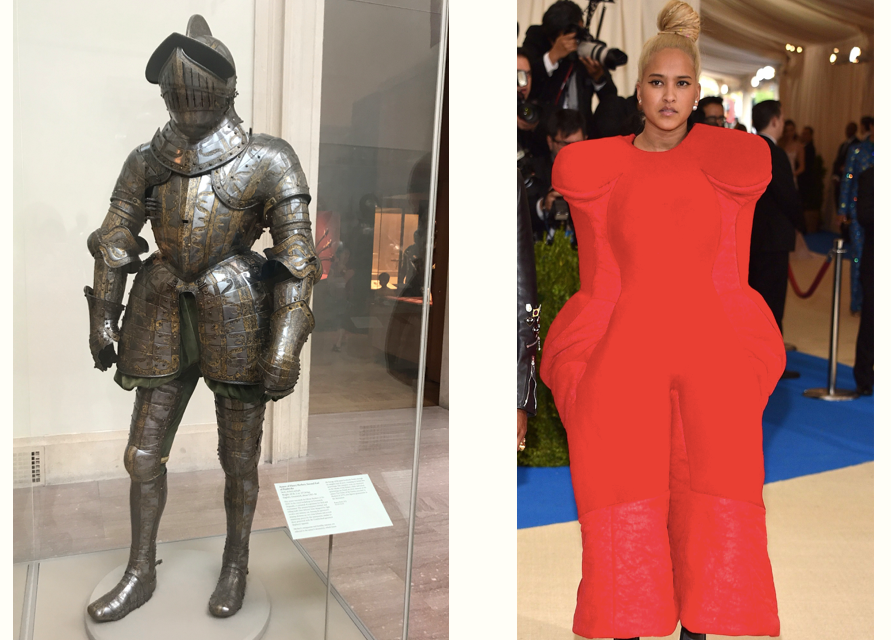 (L) A suit of armour in the Metropolitan Museum of Art; (r) Helen Lasichanh in Commes des Garçons
(L) A suit of armour in the Metropolitan Museum of Art; (r) Helen Lasichanh in Commes des Garçons
Because how Hadid looks is more reminiscent of how we’re used to seeing women: naked, compliant, and available.
 Sandro Botticelli, The Birth of Venus (Wikimedia)
Sandro Botticelli, The Birth of Venus (Wikimedia)
And since then, for the last few months, I’ve been tussling with this contradiction: for the first time, millions of women are producing and publishing pictures of themselves, but the images that make it into popular consciousness are no different to those from 500 years ago. How is technology changing the image of ourselves that we’re creating and projecting?
Women taking pictures.
It’s a truth universally acknowledged that women spend a lot more time in public imagination looking like this:
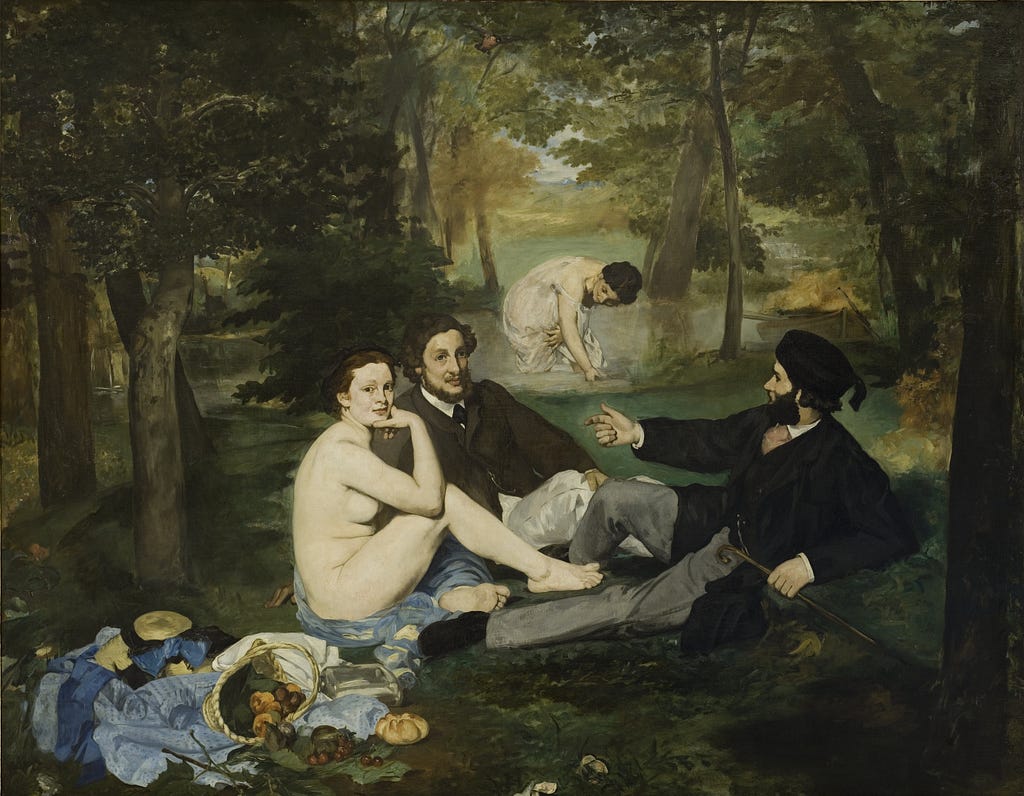 Eduoard Manet, Le déjeuner sur l’herbe (Wikimedia)
Eduoard Manet, Le déjeuner sur l’herbe (Wikimedia)
or this:
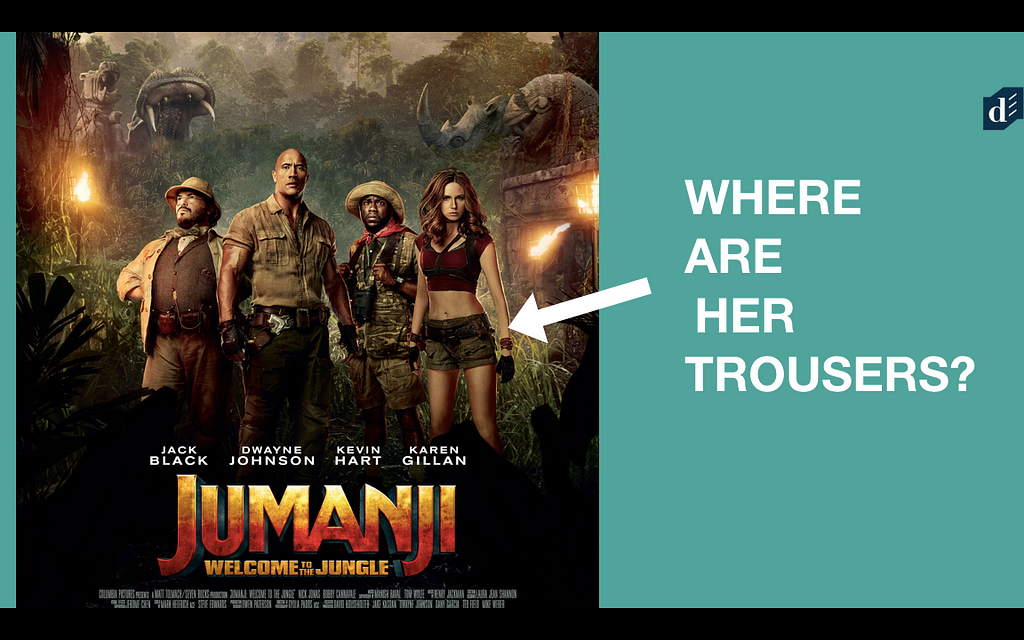 The Jumanji poster, with my annotation.
The Jumanji poster, with my annotation.
Than they do like this:
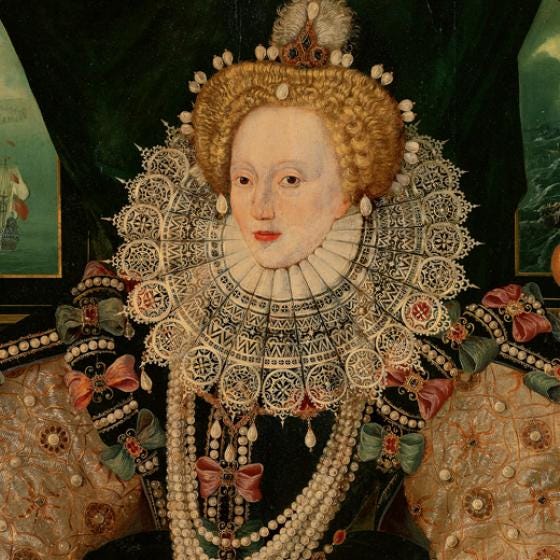 Queen Elizabeth I, attributed to George Gower (National Portrait Gallery)
Queen Elizabeth I, attributed to George Gower (National Portrait Gallery)
Of course — fashion is slightly different, because women are at least wearing clothes. But the women themselves are often so insubstantial as to be barely there — slithers of flesh and bone, not taking up too much room even in the magazines invented to celebrate them.
High-end women’s fashion, which is largely owned, run, designed and photographed by men, has a famously complex, and perhaps exploitative, relationship with the women who keep it in business.
Unlike high street beauty products, luxury fashion doesn’t gratify women with slogans like “Because you’re worth it” — the fantasies it creates are often more punitive, masochistic almost, focussed as much on the absence of women as celebrating their presence.
In 2016, for instance, Louis Vuitton used a drawing of the character Lightning from the game Final Fantasy in a campaign — and rather bafflingly sent this drawing out on the press circuit, to talk about “her” appointment.
The designer Nicolas Ghesquière welcomed this new two-dimensional representative by calling her: “the symbol of new pictorial processes. How can you create an image that goes beyond the classic principles of photography and design? Lightning heralds a new era of expression.”
A new era of expression because, in case you missed it, she’s not a woman. She’s a drawing.
And in this world where women have become expressions of men’s creativity, fashion bloggers and Instagram influencers have actually brought a kind of pseudo-candour to things.
Their pictures — which look like real life only better, interspersed with motivational quotes and unlikely images of people eating pasta — have made fashion more intimate and personal — something that can be held and examined in the palm of your hand. Millions of women now have intimate, high-definition relationships with the lifestyles, faces and bodies of hundreds of women they have never met, and rich lives lived in Instagram comments.
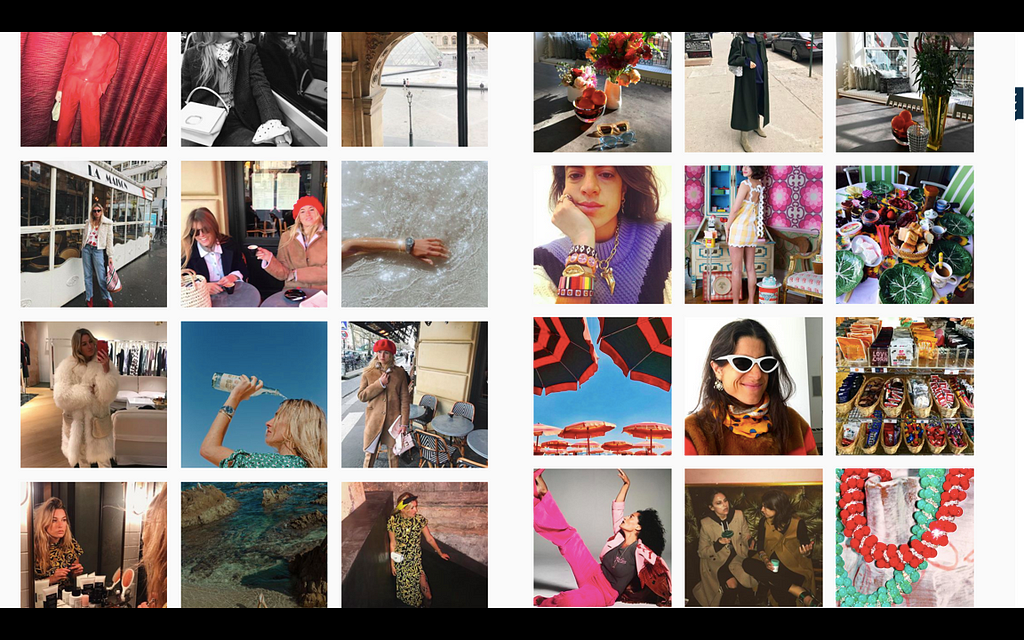 Images from Camille Charriére and Leandra Medine’s Instagram feeds
Images from Camille Charriére and Leandra Medine’s Instagram feeds
Influencer Camille Charrière told Vogue, “I know that if I want 8,000 likes on an Instagram post then I need to be wearing jeans and a T-shirt with Converse. In general, people like simplicity. They’re looking for reality, because that’s something they can emulate and buy into.”
And buying they are.
In 2017, the top 10 influencers reached an audience about the size of Canada, and e-commerce referrals from them have started to dominate mobile traffic to big name fashion stores.
Which means that for many women, the screen — which is controllable, editable, filterable — is becoming more representative than the street.
Even 10 years ago it made sense for a street-style photographer like Bill Cunningham to cycle around New York, taking photos to predict coming trends; now the same is achieved by liking pictures on Instagram, with the added bonus that you can “shop the look” with just a tap or two of the your finger.
But the crux, of course, is that the “reality” people are buying into is as much an alternate reality as any virtual world or magazine shoot.
The lens of the influencer is positioned a selfie-stick away from real life and is managed by algorithms, filtered by software and powered by likes. Which means, ultimately, that your favourite influencer is no more or less authentic than your favourite brand of deodorant.
But in the aftermath of #metoo, it makes perfect sense that women might want a protected world that looks and feels a bit better than reality. There’s something safer about engineered spontaneity, something more trustworthy about a woman’s gaze and the reassurance of her personal brand.
Never mind that we’ll never know how she took that plandid, or that most people put on trousers before lying on their kitchen counter to drink coffee. It’s a safe escape in a reckless world, like an all-inclusive holiday at a gated resort.
Which brings me to the last area: women wearing make-up
Make-up is in some ways more democratic than fashion. You can’t afford those fancy shoes, but you can still do flicky eyeliner, and if you need to brush up on your skills — well, there are 11 million YouTube tutorials to help you out.
“Putting your face on” is a culturally normative part of women’s armoury, and both the ceremony and the results of applying make-up have extended from the real world to its digital alternatives.
While women are still barely visible in most areas of public life, YouTube hums with the technical knowledge and skills of millions of women who authoritatively share their expertise about their hair, make-up and skin care.
When you see a woman put on her make-up while standing up on a busy commuter train, the rhythms and routines are second nature. She’s holding the mirror almost out of force of habit, not even because she needs to see the shapes her hands are making.
body[data-twttr-rendered="true"] {background-color: transparent;}.twitter-tweet {margin: auto !important;}
If we can't get Oprah or Hillary for next POTUS, I think it should be this woman flawlessly applying liquid eyeliner one-handed on a packed and moving tube train using her other hand not to hold on but to simultaneously watch Stranger Things on her phone. She is the best of us.
function notifyResize(height) {height = height ? height : document.documentElement.offsetHeight; var resized = false; if (window.donkey && donkey.resize) {donkey.resize(height); resized = true;}if (parent && parent._resizeIframe) {var obj = {iframe: window.frameElement, height: height}; parent._resizeIframe(obj); resized = true;}if (window.location && window.location.hash === "#amp=1" && window.parent && window.parent.postMessage) {window.parent.postMessage({sentinel: "amp", type: "embed-size", height: height}, "*");}if (window.webkit && window.webkit.messageHandlers && window.webkit.messageHandlers.resize) {window.webkit.messageHandlers.resize.postMessage(height); resized = true;}return resized;}twttr.events.bind('rendered', function (event) {notifyResize();}); twttr.events.bind('resize', function (event) {notifyResize();});if (parent && parent._resizeIframe) {var maxWidth = parseInt(window.frameElement.getAttribute("width")); if ( 500 < maxWidth) {window.frameElement.setAttribute("width", "500");}}
And photo-editing apps translate this casual optimisation — “like you, on a good day” — from your real-life human face to the screen.
Facetuning out your eyebags isn’t such a big deal if you’ve worn Touche éclat every day of your adult life, just as adding a cat filter in Snapchat isn’t *that* weird if you’ve ever applied white eyeliner to the pink bit in your inner eye to look “more awake” (pro tip: don’t do this). These micro-optimisations are no more than digital reflections of the ways women hide their imperfections and project their “best self”.
But what seems interesting is the way the online and offline worlds are colliding.
Cosmetic companies have been quick to make products that copy the affordances of Instagram filters. You can buy foundation that somehow makes your face blurrier, glowier and brighter, and the continuing popularity of contouring is at least partly because, as fashion blogger Leandra Medine says, it makes you look like “a perpetually filtered, better version of yourself”.
For many women, these micro labours aren’t new tasks but a seamless continuation of their off-line lives. If you “put your face on” to pop out to the shops, why wouldn’t you do the same to pop up on Instagram or Facebook?
But just because it’s easy, does it mean it’s good?
Probably one of the biggest downsides is the even closer coupling of personal identity with consumerism.
Shopping a look or clicking through from a sponsored post are not that different to going to TopShop with your friends. There’s a feeling of intimacy and friendship from sharing in something that someone you respect has recommended. The feeling of belonging, of being in a gang when you’re really sitting on the bus on your own.
And the trails and trails of data that we’ve left behind. The insecurities we’ve shared with our photo editing apps, the obsessions that only Instagram Discover really knows you have — these are all grist to the ad targeting that might just help to reinforce the insecurities you came to Instagram to hide from.
And where does this all end?
Like so many things, probably with Amazon.
The Amazon Echo Look might be the singularity of the fashion Internet. It’s an Amazon Echo with a camera that tells you if you look nice.
Using machine learning and a panel of experts, Alexa will not only keep you on trend but make sure you’re wearing the most flattering outfit.
“How do I look?” (or variants thereof) is one of the most complex questions a person can ask. It depends on context, taste, norms, and requires bucketloads of sensitivity. It could mean will I stand out, will I get the job, will that person fancy me, should I wear a bra, or a hundred things more. It’s a question millions of significant others have got wrong on an average Saturday night — and not because they lacked the right data points.
But also, training data for the “most flattering look” needs to come from somewhere. What’s the canonical data set for “do I look better in pink or red?” or “do these trousers go too far up my bum?” No two retailers can decide on the dimensions of a size 12, machine learning finds it difficult to deal with race, and Fat is a Feminist Issue.
Asking Alexa how you look is a bit like asking it who’s winning an argument, or to rate your self worth. It’s a subjective question that depends on context and is laden with nuance.
Checking back with an algorithm that gives you a percentage, like a school assignment, assumes it’s possible or desirable to look 100%, and that everyone has a score. That we’re rateable by Robots, and can be gazed upon and judged by them in unremarkable, everyday ways.
So to end, what I worry that the Woman’s Gaze won’t stick for around long enough to become a cultural artefact — that it will have popped up for long enough to make enough data for robots to understand. It seems possible that the liberation of the Woman’s Gaze might be very fleeting indeed.
Women, Plandids, Power was originally published in Hacker Noon on Medium, where people are continuing the conversation by highlighting and responding to this story.
Disclaimer
The views and opinions expressed in this article are solely those of the authors and do not reflect the views of Bitcoin Insider. Every investment and trading move involves risk - this is especially true for cryptocurrencies given their volatility. We strongly advise our readers to conduct their own research when making a decision.
